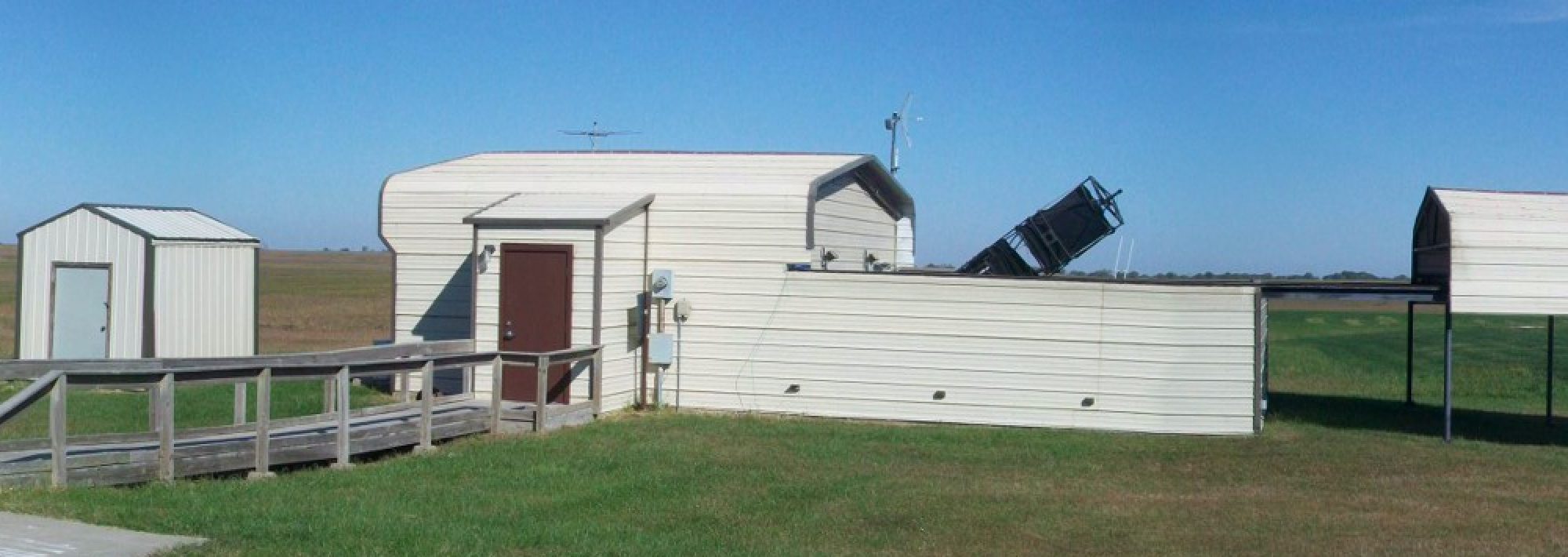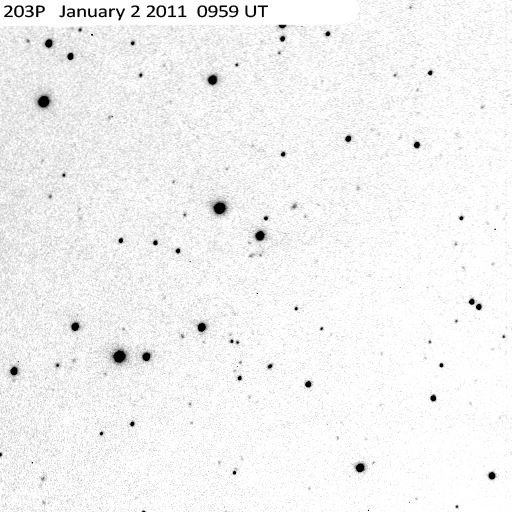Wanna see a really, really faint object? Check out the tadpole shape, tail extending up and to the right. You’ll need to look at the very center in this image, taken with the 27-inch telescope at NEKAAL’s Farpoint Observatory.
That’s comet 203P (Korlevich). Now, the “203” means it’s the 203rd comet of its type discovered. The “P” means it’s a periodic comet and will come around again, unless it runs into something, breaks up, etc. And “Korlevich” is the name of the discoverer, or the name of the astronomer who “recovered” it (determined that it is the same as a comet we’d seen before). This comet was discovered in 1999. That’s not very long ago–if you had seen taken this picture 13 years ago and reported that little smudge to the Minor Planet Center, your own name would be forever listed next to “Comet 203: Discoverer”!
Note that this is a negative picture. Which does not mean it goes around complaining. It means that we’ve made the stars look black on a white background, rather than the way it really looks in the sky. Astronomers do this because it’s easier to see things on grainy pictures that way–especially if you’re in the observatory, at 3 in the morning, squinting at this image you just took.
Comet 203P was 350 million miles away when this image was taken, so it’s really faint–in fact on that night it would have to have been about one million times brighter to see it naked-eye. But hey, compared to your eyes, the telescope and camera have four totally unfair advantages:
- The telescope and camera collected light over a width of 27 inches–the pupil of your eye is about 0.2 inches. Sounds like a 135-fold advantage, but wait!–it’s a squared relation, making it a 18,000-fold advantage. Unfair.
- They stared at the comet for 15 minutes and without forgetting a single photon. Your eye’s persistence of vision is normally a fraction of a second.
- The whole picture is only about 1/5 of a degree on each edge. That’s about the same as the length of a grain of rice held at arm’s length. Even the very brightest stars in this picture (the biggest black spots) are much fainter than you could see with just your eyes.
- The camera operated at -50°C so that it didn’t get distracted by random infrared light. A neat trick, but we at NEKAAL just do not recommend you try this with your eyes!


